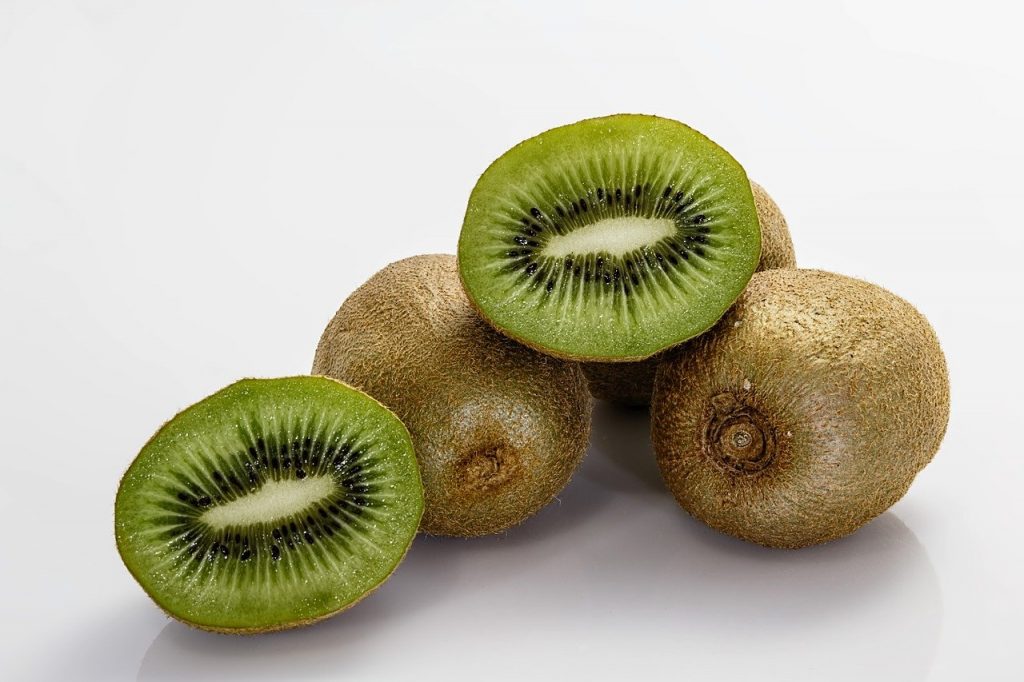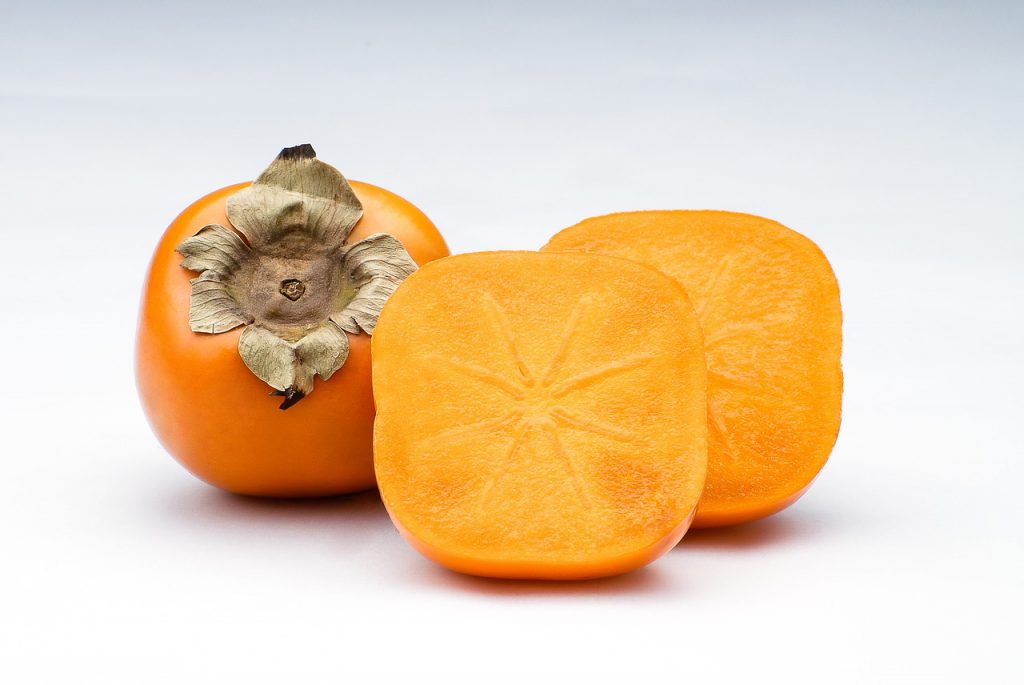[Article updated on 19/09/2023]
Fruits and vegetables contain lots of vitamins, minerals, antioxidants and have a high fiber content compared to other types of foods. It is also known and proven that fruits and vegetables have many health benefits. In some regions of Nepal, and also in Sardinia, studies have shown that the population is relatively healthier and lives longer because they consume a lot of fruits and vegetables. To benefit from the benefits of these foods, I invite you to read my article!
Kiwi
Kiwi, also called Chinese gooseberry, is the fruit ofActinidia chinensis, a climbing shrub of the Actinidiaceae family. The kiwi is an oval berry about 6 cm long. The thin, green-brown skin of the fruit is densely covered with short, wiry brown hairs. The juicy pulp, but firm until fully ripe, is bright green. In the center of the pulp, there are tiny black seeds arranged around a whitish core.

Kiwi has a more or less acidic taste, similar to redcurrants and strawberries. Thanks to its sour, but tasty and refreshing taste, it can be eaten raw, made into juice or used in pastries. Kiwis can be prepared with meat or used as a garnish. Kiwi pulp contains a high amount of vitamin C.
In kiwi we find good concentrations of vitamin E and other carotenoids and flavonoids, active against the action of free radicals. It also provides folic acid, a vitamin essential for the proper functioning of brain functions. Kiwi is particularly rich in potassium. It also contains magnesium, calcium, chlorine, sulfur and phosphorus. The pulp and seeds are rich in fiber.
Kabosu
Kabosu is the fruit of Citrus × sphaerocarpa, a citrus fruit belonging to the Rutaceae family. Kabosu is a small fruit with a diameter ranging from 4 to 5 centimeters. Round to oval in shape, the kabosu has a small protuberance at its apex. The peel of the fruit is stony and shiny. This covering dotted with prominent sebaceous glands is first green, then turns bright yellow when the fruit matures. Pale yellow in color, the kabosu pulp contains many seeds. It exudes a sweet, delicate and refreshing citrus scent.
Kabosu can be eaten green or ripe. It has a sour, floral taste with notes of melons, lemons and mint. It is used with ponzu, grilled fish and sashimi. It is also used as an alternative to vinegar in certain Japanese recipes. In Ōita Prefecture, kabosu juice is used to flavor shōchū, noodles and miso soup. Like other citrus fruits, kabosu is rich in vitamin C.
Kombu
Kombu is a seaweed vegetable. The term Kombu designates, in fact, a series of brown algae of the Phaeophyceae family, the best known and most used of which are Laminaria Japonica (which comes from Japan) and Laminaria digitata (which comes from Brittany). Widely used in Japanese cuisine, kombu is used to flavor and sweeten foods in a natural way. It is used in particular in soups, legume dishes and broths to make them more digestible. It also enriches these dishes with fiber, mineral salts and amino acids.
Kombu is also used as a supplement for its slimming and laxative effects. It is a food rich in antioxidants and mineral salts such as potassium, magnesium, phosphorus and calcium. It also contains vitamins A, B1, B2 and C. It is also rich in glutamic acid, a very useful compound for flavoring dishes in a natural way. In fact, it is an amino acid that activates umami. In Japanese this word designates one of the five fundamental tastes perceived by the receptor cells present in the human oral cavity. It is also the algae richest in iodine.
Kang Kong
Kangkong or water spinach is a leafy vegetable. It is picked from Ipomea aquatica, a creeping plant belonging to the botanical family Convolvulaceae. Very popular in East and Southeast Asian cuisines, kangkong is similar to spinach and watercress. A very adaptable ingredient, this leafy vegetable can be used in stir-fries or served as an accompaniment to hearty dishes. The flavor of this ingredient can be enhanced by different marinades. Cooked properly, the tender and delicious kangkong leaves can be enjoyed in a variety of ways.
In Malaysia, Indonesia, and Singapore, the tender stems and leaves of kangkong are fried with shrimp paste, ginger, garlic, chili, and other spices. In Thailand, it is cooked with a sweet-spicy sauce and cuttlefish. Kangkong is rich in iron, fiber, calcium, thiamine, niacin and Vitamin C. Kangkong is a very low-calorie vegetable. 100 grams of kangkong provides only 30 kcal.
Khaki
An autumn fruit, very sweet and tasty, persimmon is one of the seasonal fruits of October. Persimmon is the fruit of Diospyros persimmon, a tree belonging to the Ebenaceae family. Its scientific name means “food of the gods” in Greek. The fruit has a characteristic bright orange color which happily tints the meadows and woods of the plains and hills in the months of October and November. Originally from East Asia, the persimmon finds its specific area of origin in south-central China where its culture, one of the oldest in the world, was born more than 2000 years ago.

Persimmon has a vanilla flavor and a firm, crunchy pulp, very similar to that of apples. Being a very sweet and tasty fruit, persimmon can be eaten as such. However, it can also be used for preparing fruit smoothies, fruit salads, jams and desserts. It can also be used in savory recipes, such as cheese and persimmon focaccia.
Persimmon has a high water content (80%) and is very rich in sugars (12%). The quantity of fiber is good (3.6%), while proteins and lipids are only present in very small quantities (0.6 grams and 0.3 grams respectively per 100 grams of fresh product). It is a fruit very rich in minerals, notably potassium, calcium, magnesium and phosphorus, as well as vitamins (A, C, E, niacin, thiamine and riboflavin). The antioxidant content is also remarkable, especially with regard to beta-carotene, lycopene and zeaxanthin.
